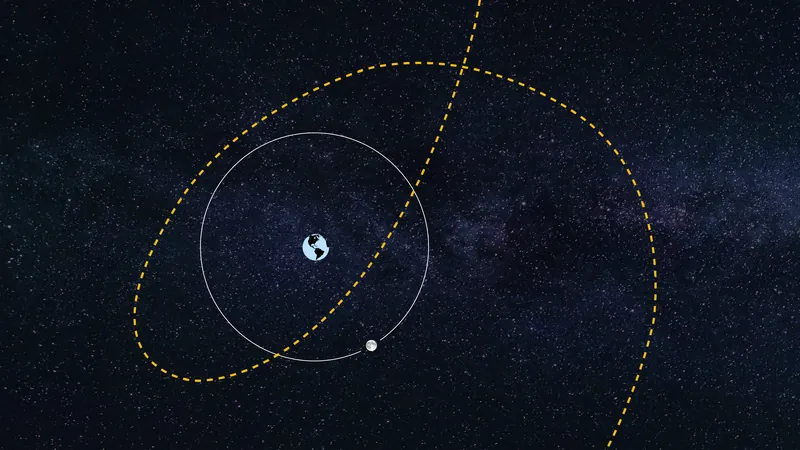
Earth to Welcome a Temporary Mini-Moon: Asteroid 2024 PT5 Approaches!
2024-09-19
Author: Mei
Introduction
Excitement is in the air as Earth is set to gain a temporary mini-moon! This exhilarating celestial event is expected between September 29 and November 25, when asteroid 2024 PT5 will be captured by our planet’s gravitational pull.
Discovery of 2024 PT5
Discovered on August 7 by NASA's Asteroid Terrestrial-impact Last Alert System (ATLAS), the small asteroid is making headlines thanks to a study published recently in the AAS Research Notes. During its brief 56-day visit, 2024 PT5 will trace a horseshoe-shaped path as it orbits our planet before escaping back into the depths of space, eventually being drawn toward the sun.
Visibility of 2024 PT5
Unfortunately, the intimate encounter may be too dim for amateur astronomers. With an absolute magnitude of 22, 2024 PT5 is unlikely to be visible to the naked eye or even through standard backyard telescopes. So, if you were hoping to catch a glimpse of this mini-moon, you might be out of luck!
Origin of 2024 PT5
But where exactly did asteroid 2024 PT5 come from? According to NASA, this celestial body is considered a Near-Earth Object (NEO). Estimates suggest that over 35,000 NEOs exist within our solar system, largely composed of asteroids. Researchers believe this particular specimen arose from the Arjuna asteroid belt, a region known for its collection of modest asteroids that possess Earth-like orbits.
Size Comparison
Size-wise, 2024 PT5 is a mere fraction of our familiar moon’s diameter of 2,159 miles, measuring approximately 33 feet across—that’s roughly equivalent to the length of a city bus! This isn’t the first time Earth has played host to a mini-moon; 2024 PT5 will share its orbit with asteroid 2022 NX1, which also measured about 33 feet and visited Earth in 1981 and 2022. Interestingly, it is forecasted to return as a transient mini-moon in 2051.
Future Encounters
What’s more, astronomers anticipate that asteroid 2024 PT5 will make another appearance in 2055, giving us all something to look forward to! Keep your eyes peeled on the cosmic calendar—who knows what other celestial surprises await in the near future?
Conclusion
As we prepare for this fleeting celestial phenomenon, let’s hope that the skies remain clear for those wishing to gaze upwards, even if 2024 PT5 proves elusive to see. Buckle up for an exciting ride through our solar system!


 Brasil (PT)
Brasil (PT)
 Canada (EN)
Canada (EN)
 Chile (ES)
Chile (ES)
 Česko (CS)
Česko (CS)
 대한민국 (KO)
대한민국 (KO)
 España (ES)
España (ES)
 France (FR)
France (FR)
 Hong Kong (EN)
Hong Kong (EN)
 Italia (IT)
Italia (IT)
 日本 (JA)
日本 (JA)
 Magyarország (HU)
Magyarország (HU)
 Norge (NO)
Norge (NO)
 Polska (PL)
Polska (PL)
 Schweiz (DE)
Schweiz (DE)
 Singapore (EN)
Singapore (EN)
 Sverige (SV)
Sverige (SV)
 Suomi (FI)
Suomi (FI)
 Türkiye (TR)
Türkiye (TR)
 الإمارات العربية المتحدة (AR)
الإمارات العربية المتحدة (AR)